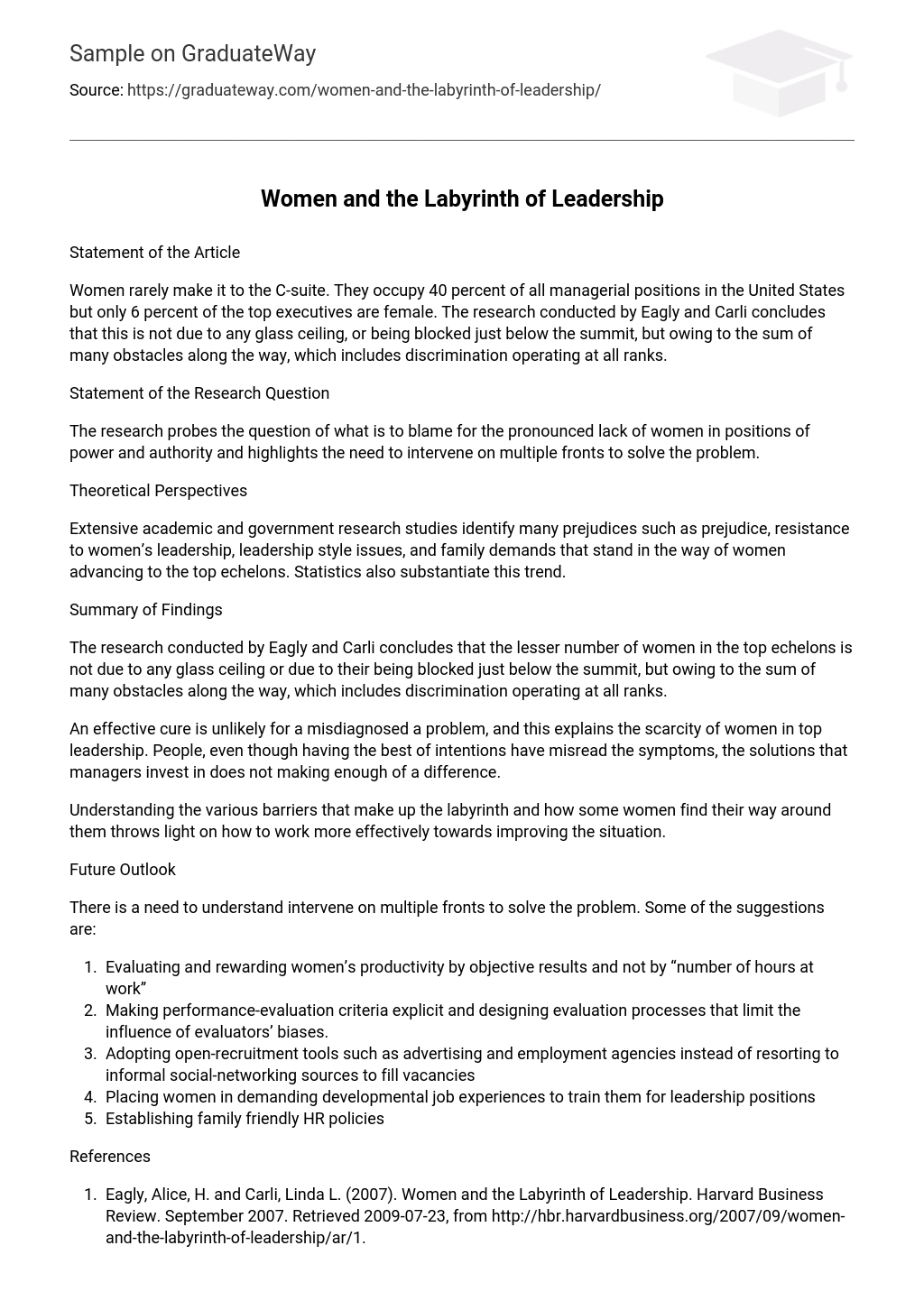Statement of the Article
Women rarely make it to the C-suite. They occupy 40 percent of all managerial positions in the United States but only 6 percent of the top executives are female. The research conducted by Eagly and Carli concludes that this is not due to any glass ceiling, or being blocked just below the summit, but owing to the sum of many obstacles along the way, which includes discrimination operating at all ranks.
Statement of the Research Question
The research probes the question of what is to blame for the pronounced lack of women in positions of power and authority and highlights the need to intervene on multiple fronts to solve the problem.
Theoretical Perspectives
Extensive academic and government research studies identify many prejudices such as prejudice, resistance to women’s leadership, leadership style issues, and family demands that stand in the way of women advancing to the top echelons. Statistics also substantiate this trend.
Summary of Findings
The research conducted by Eagly and Carli concludes that the lesser number of women in the top echelons is not due to any glass ceiling or due to their being blocked just below the summit, but owing to the sum of many obstacles along the way, which includes discrimination operating at all ranks.
An effective cure is unlikely for a misdiagnosed a problem, and this explains the scarcity of women in top leadership. People, even though having the best of intentions have misread the symptoms, the solutions that managers invest in does not making enough of a difference.
Understanding the various barriers that make up the labyrinth and how some women find their way around them throws light on how to work more effectively towards improving the situation.
Future Outlook
There is a need to understand intervene on multiple fronts to solve the problem. Some of the suggestions are:
- Evaluating and rewarding women’s productivity by objective results and not by “number of hours at work”
- Making performance-evaluation criteria explicit and designing evaluation processes that limit the influence of evaluators’ biases.
- Adopting open-recruitment tools such as advertising and employment agencies instead of resorting to informal social-networking sources to fill vacancies
- Placing women in demanding developmental job experiences to train them for leadership positions
- Establishing family friendly HR policies
References
- Eagly, Alice, H. and Carli, Linda L. (2007). Women and the Labyrinth of Leadership. Harvard Business Review. September 2007. Retrieved 2009-07-23, from http://hbr.harvardbusiness.org/2007/09/women-and-the-labyrinth-of-leadership/ar/1.





